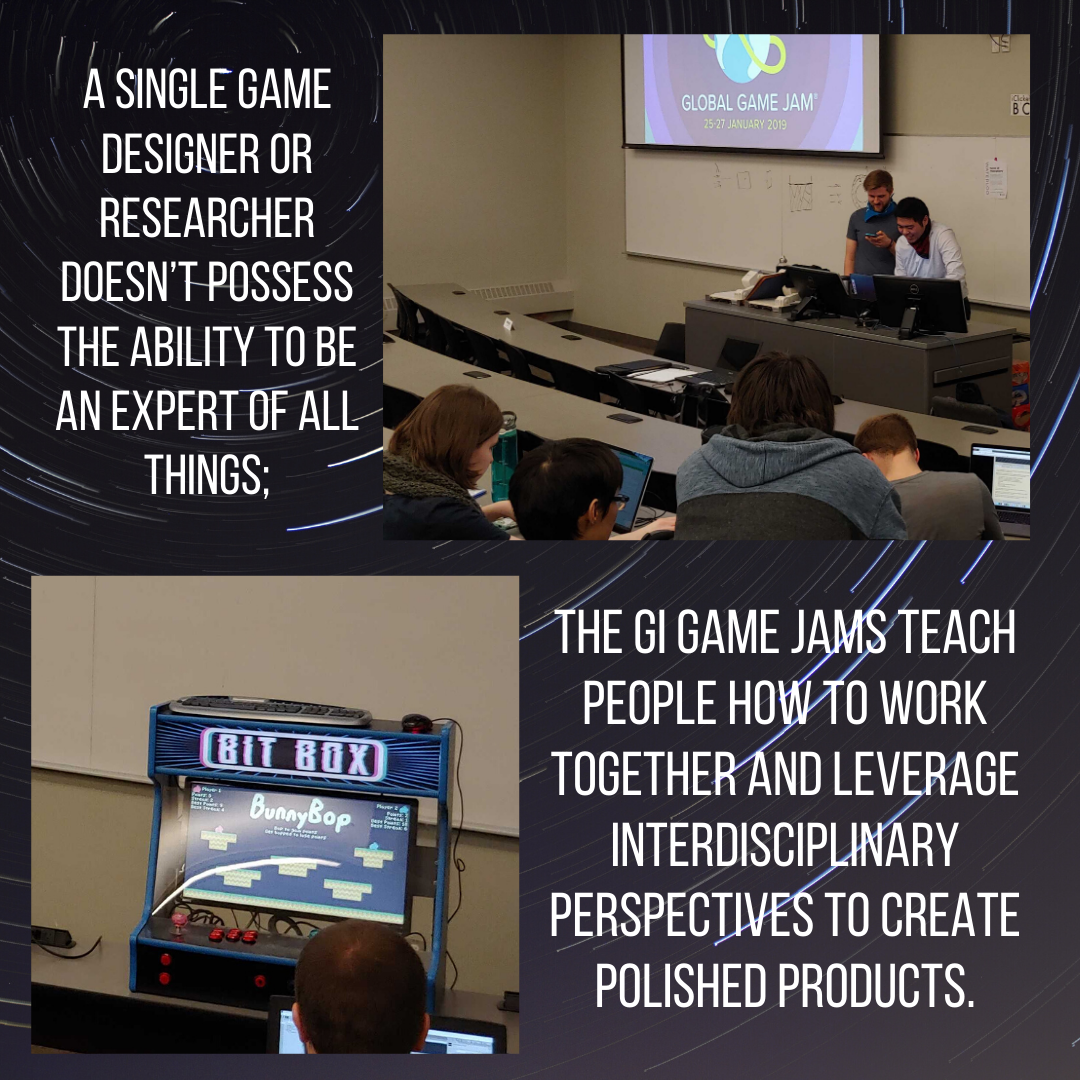“I wasn’t really planning any game in particular,” says Oliver Schneider, Assistant Professor in the Department of Management Sciences, “I just knew I wanted to check out the Game Jam since I’ve seen how important it is to the GI culture".

Professors rarely attend the Game Jam despite their best intentions. Taking place over the course of an entire weekend, it’s unlikely that a faculty member is able to invest in the time. After a year of being too busy, Schneider decided that he would commit to the Jam weekend, justifying it as a research endeavor to discover how music in video games informs the way sensory components of technologies function as a system.
The Jam proved to be very fruitful for Schneider’s research program: “I realized how little I knew about Unity (a game development engine) and the problems you encounter when designing multisensory experiences”.
Schneider’s Game Jam team included John Harris, the GI’s Maker Support staff, and two of the presidents of the Game Dev Club, Cassidy Hilts and Nathan Chan. Schneider composed the game’s soundtrack based only on his teammates’ description of the game mechanics they were designing.
As seasoned game jammers, Harris, Hilts, and Chan decided that they wanted to spend the weekend developing specific skills like system architecture, animations, and the user interface, respectively. The team was designing a gauntlet-style game, but they were less concerned with the actual story, which proved to be an exciting challenge for Schneider who had to think about how to design music without a fully-fledged game concept.
“Doing sound and audio, I realized how much of the theme or story needs to be there. Originally, I designed an ice-cavern-style tune, but it didn’t fit,” explains Schneider, “I had to get a lot of input from the team on a trial-and-error basis in order to figure out the vibe”.
What Schneider learned during the Game Jam is true for designing haptic experiences, too: It’s not enough for multimodal pieces to be put together - they need to be integrated through a unifying concept.
Now that he knows more about the video game creation pipeline, Schneider can lead his research team in thinking about the intricacies of creating responsive and interactive haptic transitions. His lab can use this knowledge inform the set of questions and ways of answering how they can build tools that support people, like artists, designers, and developers, in creating haptic systems.
Does Prof Schneider recommend the Game Jam to other faculty members?
It was really cool to take a break from lectures and embrace my artistic side for a weekend. There’s a lot we can learn about our research by taking this opportunity to change things up while connecting and learning from students.
Over and above these lessons, the Game Jam enabled Oliver Schneider to learn something new about himself: “part of what drives me is creating really polished experiences. In my opinion, if you don’t have the polish on a final product, you might as well not have it at all. This is what truly defines haptic experiences for me”.
The polish that Schneider is referring to is the way all of the pieces that make up a game (or interactive system) come together and feel complete – the idea behind the “sum is greater than the whole of its parts” adage. For Schneider, the game isn’t complete unless all of the smaller components are properly executed and integrated into the whole.
A single game designer or researcher doesn’t possess the ability to be an expert of all things, so the GI Game Jams teach people how to work together and leverage interdisciplinary perspectives to create polished products.